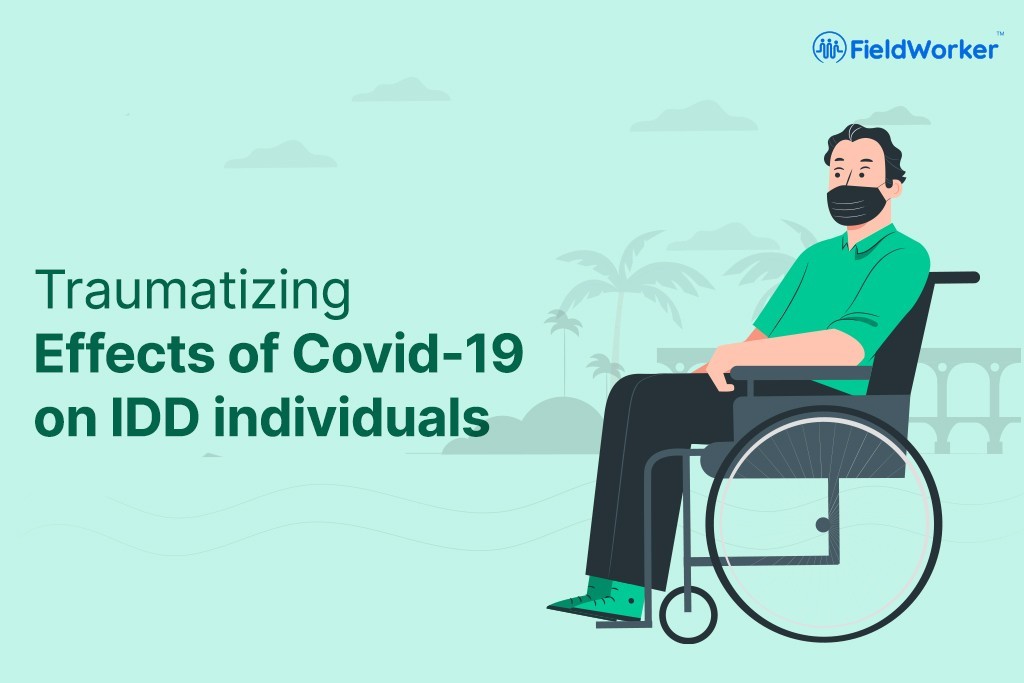The infamous COVID caused quite a stir in the world. Unfortunately, IDD individuals were not an exception. In recent studies, COVID was found to be the main culprit for fatalities in people with intellectual and developmental disabilities.
Generally, people with intellectual disabilities have poor health outcomes with their life expectancy being nearly 20 years lower than the general population’s, and mortality for those with intellectual disabilities is significantly higher.
Intellectual or Developmental Disabilities cause long-term impairments in mobility, language, learning, self-care, and independent living. Down syndrome, cerebral palsy, and intellectual disabilities are just a few.
Various factors cause increased mortality in people with intellectual disabilities, and there’s a need for a thorough investigation to understand the impact; in some cases, the cause of their disability or complications associated with their disability may contribute to a higher risk of mortality.
In other cases,
– socio-economic factors,
– barriers to receiving the full amount of health care to which they should be entitled, and
– barriers to effective advocacy for this population may contribute to an inability to receive appropriate and effective health care, leading to increased morbidity and mortality.
Important to note
Using 2020 death certificate data, a study to understand the mortality burden among IDD and non-IDD individuals in the US was conducted to examine the death patterns for people with and without IDD. Come to find out, COVID was the third leading cause of death in those without an IDD, after heart disease and cancer. On the other hand, COVID was the leading cause of death in people with IDD.
Numbers don’t lie
– One study found that people with intellectual disabilities had a higher case fatality rate in California (.055% compared with .019% among the general population).
– A similar study of New York State residents discovered that those with intellectual or developmental disabilities were more likely to die, with those in residential group homes being especially vulnerable due to higher case rates.
– In another study, those with intellectual and developmental disabilities had nearly eight times the mortality rate of the general population, demonstrating the severity of this population’s risk.
-The most extensive study of intellectual disability and Covid-19 outcomes looked at claims data from 467,773 people diagnosed with Covid-19 between April and August 2020.
This study discovered that people with developmental disabilities were more than three times more likely to die after receiving a Covid-19 diagnosis.
While this data clearly shows that people with intellectual disabilities are more likely to die from Covid-19, the full impact of Covid-19 on people with intellectual disabilities in the United States is unknown. The current study compares the effect of Covid-19 on people with intellectual disabilities to the general population using a large national sample of patients.
So what were the challenges faced by IDD individuals during the pandemic?
Individuals with intellectual disabilities have suffered greatly as a result of Covid-19. An intellectual developmental disability was the most substantial independent risk factor for being diagnosed with Covid-19 and the most potent independent risk factor for Covid-19 mortality other than age.
-We presume that people with intellectual disabilities are more likely to contract Covid-19 and, as a result, are more likely to be admitted to ICUs and/or die in hospitals.
-In IDD individuals, the risk of death is significantly higher than in other conditions such as congestive heart failure, kidney disease, and lung disease.
-Aside from the direct risk of Covid-19, the pandemic has had a negative impact on the ability of people with intellectual disabilities to receive health care and daily support. Since IDD individuals reside in a group setting, they are more prone to contract the virus.
-Healthcare providers unaware of this medical limitation may incorrectly turn them away, despite the Americans with Disabilities Act covering this limitation.
-A lack of traditional supportive services may result in increased behavioral issues and treatment with psychotropic medication, which has adverse side effects such as weight gain.
– During the COVID pandemic, a severe shortage of affordable housing increased housing rents and unemployment, resulting in an increase in poverty, lower wages and income, increased inflation, and a higher rate of domestic violence.
– Rents increased by 20% in 2021 due to a 20% increase in demand in the housing sector. With the COVID surge, job losses, wage cuts, and inflation, more people have been evicted from their homes, putting them at risk of homelessness. People with IDD had to deal with all this on another level.
-To make matters worse, federal policies that limit their ability to earn enough money leave them vulnerable and contribute to poverty and homelessness. Moreover, Individuals with IDD are denied access to shelters, resulting in nearly 7 out of 10 people with disabilities living in dangerous areas.
Homeowners frequently believe that if low-income people move into their neighborhoods, their social status and property value will suffer.
While the needs of this population as a result of Covid-19 necessitate immediate attention, these findings also highlight existing healthcare system limitations for them.
The studies focus on the first year of the COVID-19 pandemic. A current data inequity that allows IDD to be reported as the cause of death makes it impossible to determine whether people with IDD continue to bear a disproportionate COVID-19 burden.
We’ll need to dig further to find a permanent solution:
– These risk factors and the additional barriers previously discussed indicate that more resources are required to vaccinate this vulnerable population and those who provide direct care to prevent Covid-19 infection.
– It is worth noting that while inpatient mortality is higher in this group, ICU admission is not. This raises the question of whether critically ill patients with intellectual disabilities are less likely to be transferred to a higher level of care or if differences in advanced care planning exist in this population. This area needs more research.
– It is crucial to have the latest data in hand to understand the direction we are moving in providing healthcare to IDD individuals.
Make them pandemic-proof:
Some of the issues that require attention in the US are the neglect of IDD individuals in accessing healthcare, inequality in employment and housing, and a lack of education among caregivers and healthcare professionals about dealing with IDD individuals. This marginalized group requires immediate attention and hopefully, in the coming years, we can safeguard their lives by making them pandemic-proof.

